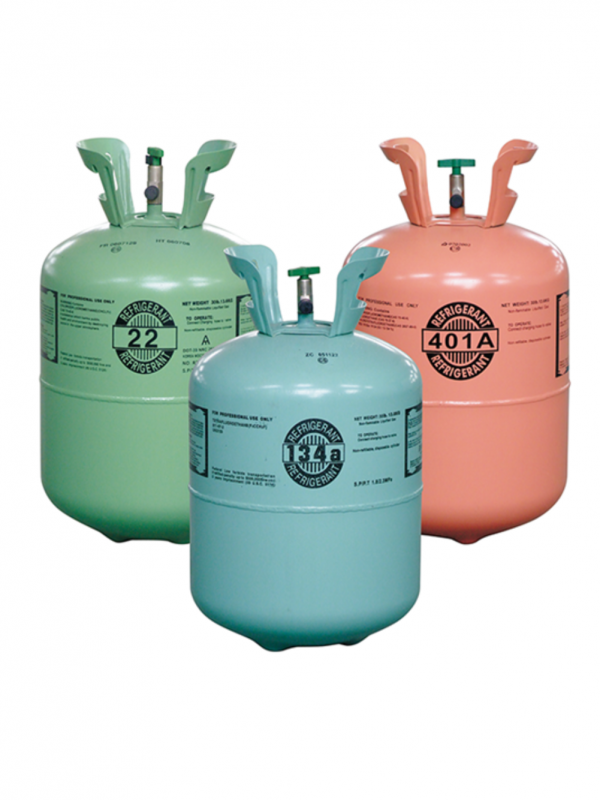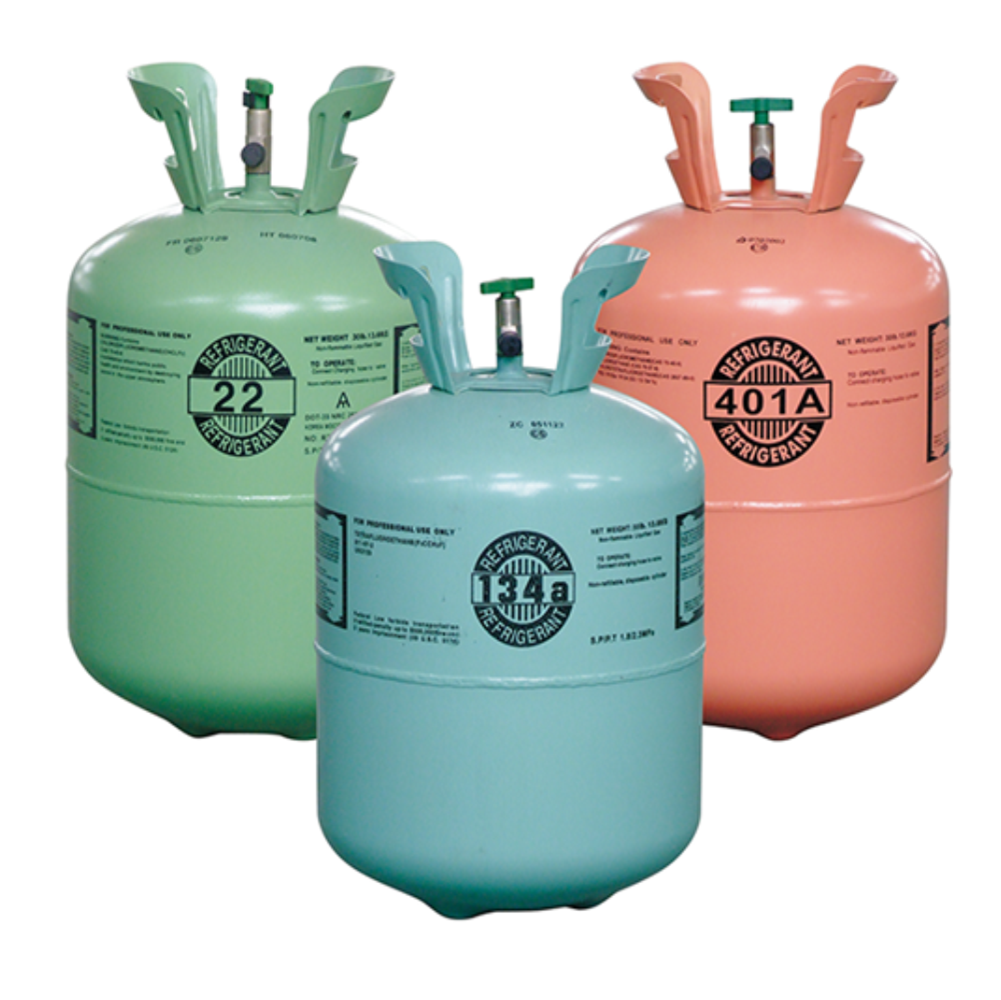- Have any questions?
- +86-189 8930 5995
- sales@mosinterchem.com.cn
R290 CAS 74-98-6

R134a CAS 811-97-2
25/12/2018
R507 CAS 354-33-6 420-46-2 27987-06-0
25/12/2018| Model: | R290 |
| Place of Origin: | Zhejiang,China (Mainland) |
| Brand Name: | MOSINTER |
| CAS No.: | 74-98-6 |
| Purity: | ≥99.5% |
| Melting point: | -187.678 |
| Boiling point: | -42.06 |
| Water solubility: | insoluble |
| Character: | Colorless and odorless gas |
| Chemical formula: | C3H8 |
| GWP100: | 3.3 |
| Fp: | -104 °C |
| ODP: | 0 |
| Vapor density: | 1.5 (vs air) |
| Density: | 1.55 g/mL at 25 °C(lit.) |
Uses of Propane
Propane is a popular choice for barbecues and portable stoves because the low boiling point of −42 °C (−44 °F) makes it vaporize as soon as it is released from its pressurized container. Therefore, no carburetor or other vaporizing device is required; a simple metering nozzle suffices. Propane powers some locomotives, buses, forklifts, taxis and ice resurfacing machines and is used for heat and cooking in recreational vehicles and campers. Since it can be transported easily, it is a popular fuel for home heat and backup electrical generation in sparsely populated areas that do not have natural gas pipelines.
A 20 lb (9.1 kg) steel propane cylinder. This cylinder is fitted with an overfill prevention device (OPD) valve, as evidenced by the trilobular handwheel.
Propane is generally stored and transported in steel cylinders as a liquid with a vapor space above the liquid. The vapor pressure in the cylinder is a function of temperature. When gaseous propane is drawn at a high rate, the latent heat of vaporisation required to create the gas will cause the bottle to cool. (This is why water often condenses on the sides of the bottle and then freezes). In addition, the lightweight, high-octane compounds vaporize before the heavier, low-octane ones. Thus, the ignition properties change as the cylinder empties. For these reasons, the liquid is often withdrawn using a dip tube. Propane is used as fuel in furnaces for heat, in cooking, as an energy source for water heaters, laundry dryers, barbecues, portable stoves, and motor vehicles.
Commercially available “propane” fuel, or LPG, is not pure. Typically in the United States and Canada, it is primarily propane (at least 90%), with the rest mostly ethane, propylene, butane, and odorants including ethyl mercaptan.This is the HD-5 standard, (Heavy Duty-5% maximum allowable propylene content, and no more than 5% butanes and ethane) defined by the American Society for Testing and Materials by its Standard 1835 for internal combustion engines. Not all products labeled “LPG” conform to this standard however. In Mexico, for example, gas labeled “LPG” may consist of 60% propane and 40% butane. “The exact proportion of this combination varies by country, depending on international prices, on the availability of components and, especially, on the climatic conditions that favor LPG with higher butane content in warmer regions and propane in cold areas”.
Propane use is growing rapidly in non-industrialized areas of the world. Propane has replaced many older other traditional fuel sources. The “propane” sold outside North America is actually a mixture of propane and butane. The warmer the country, the higher the butane content, commonly 50/50 and sometimes reaching 75% butane. Usage is calibrated to the different-sized nozzles found in non-U.S. grills.[citation needed] Americans who take their grills overseas — such as military personnel — can find U.S.-specification propane at AAFES military post exchanges.
North American industries using propane include glass makers, brick kilns, poultry farms and other industries that need portable heat.
In rural areas of North America, as well as northern Australia and some parts of southern India propane is used to heat livestock facilities, in grain dryers, and other heat-producing appliances. When used for heating or grain drying it is usually stored in a large, permanently placed cylinder which is recharged by a propane-delivery truck. As of 2007, 9.7 million American households use propane as their primary heating fuel.
In North America, local delivery trucks with an average cylinder size of 3,000 US gallons (11,000 L), fill up large cylinders that are permanently installed on the property, or other service trucks exchange empty cylinders of propane with filled cylinders. Large tractor-trailer trucks, with an average cylinder size of 10,000 US gallons (38,000 L), transport the propane from the pipeline or refinery to the local bulk plant. The bobtail and transport are not unique to the North American market, though the practice is not as common elsewhere, and the vehicles are generally called tankers. In many countries, propane is delivered to consumers via small or medium-sized individual cylinders, while empty cylinders are removed for refilling at a central location.
Propene (also called propylene) can be a contaminant of commercial propane. Propane containing too much propene is not suited for most vehicle fuels. HD-5 is a specification that establishes a maximum concentration of 5% propene in propane. Propane and other LP gas specifications are established in ASTM D-1835.All propane fuels include an odorant, almost always ethanethiol, so that people can easily smell the gas in case of a leak. Propane as HD-5 was originally intended for use as vehicle fuel. HD-5 is currently being used in all propane applications.
Reactivity Profile
PROPANE is incompatible with strong oxidizing agents.
Mainly usage
It is used for central air conditioning, heat pump air conditioning, household air conditioners and other small refrigeration equipment, replace HCFC-22, can also be used for metal welding and cutting gas.
Health Hazard
Vaporizing liquid may cause frostbite. Concentrations in air greater than 10% cause dizziness in a few minutes. 1% concentrations give the same effect in 10 min. High concentrations cause asphyxiation.
Fire Hazard
Behavior in Fire: Containers may explode. Vapor is heavier than air and may travel a long distance to a source of ignition and flash back.
Storage
R-290 refrigerant cylinder is a pressure vessel and flammable, it should keep away from fire, heat, avoid direct sunlight, usually store in a cool, dry and ventilated warehouse.You should be lightly armed, light unloading, cylinders and valves and other accessories to prevent breakage when handling.
Package
Disposable cylinder 25 lb / 11.3 kg;Recycling cylinder 400 l, 926 l;ISO – tanks.
Quality Index
| Purity | ≥99.5% |
| Sulfur | ≤1.0ppm |
| Moisture(ppm by weight) | ≤10ppm |
| Acidity(ppm by weight as HCL) | ≤1.0ppm |
| Vapor Residue(% by volume) | ≤0.01% |
You must be logged in to post a review.



Reviews
There are no reviews yet.